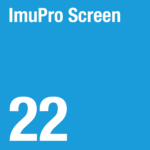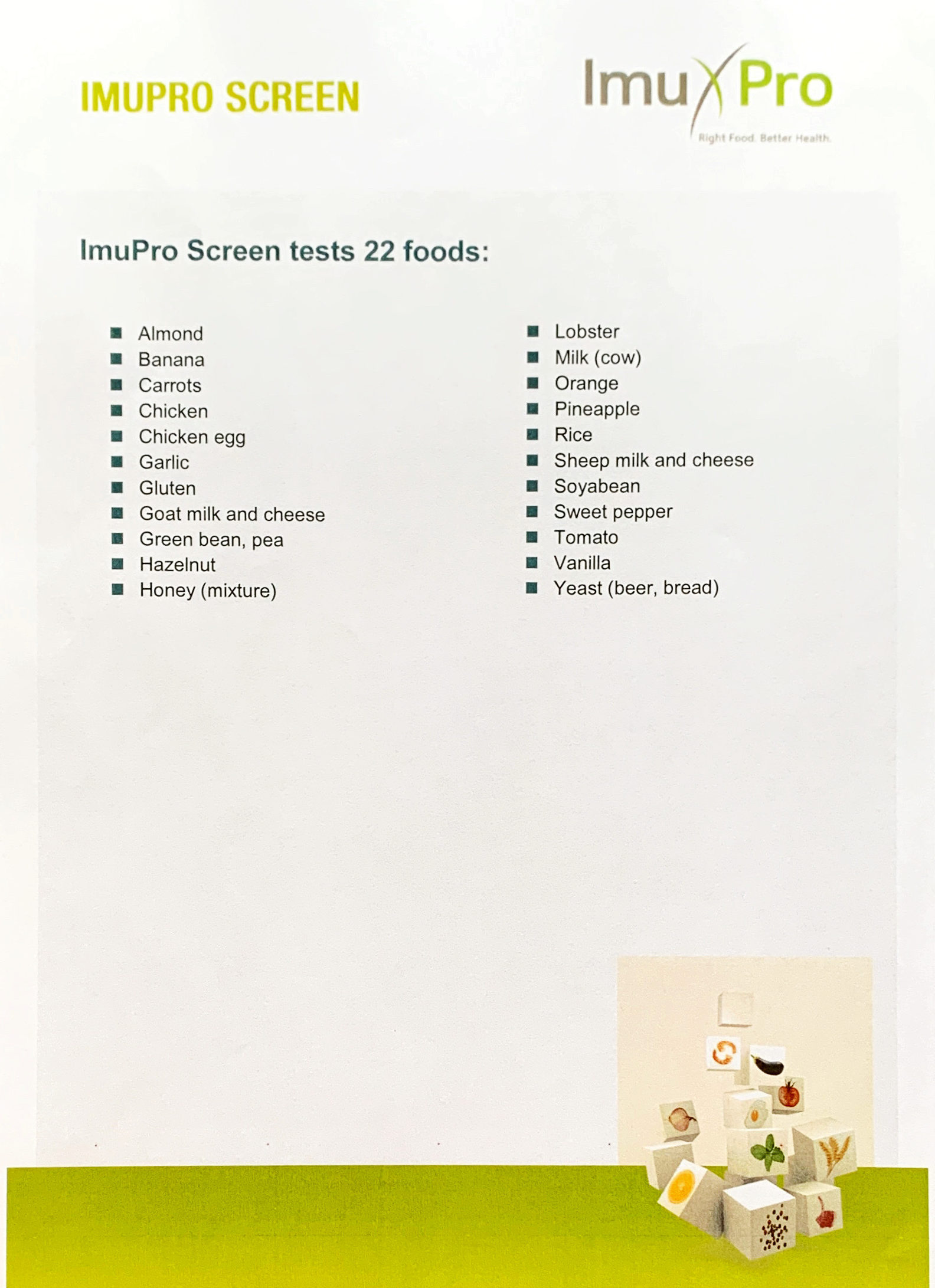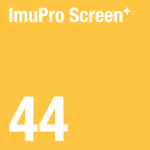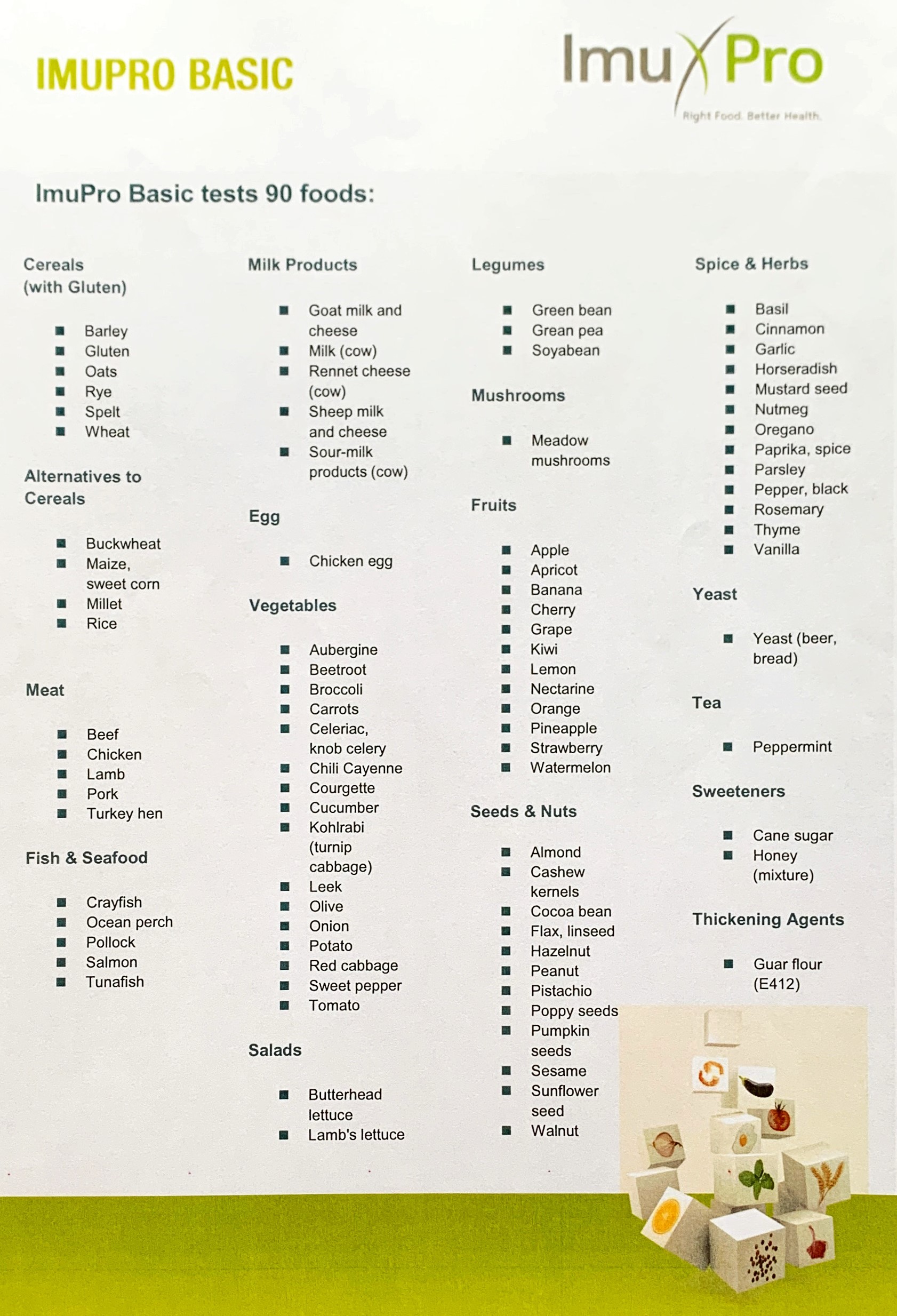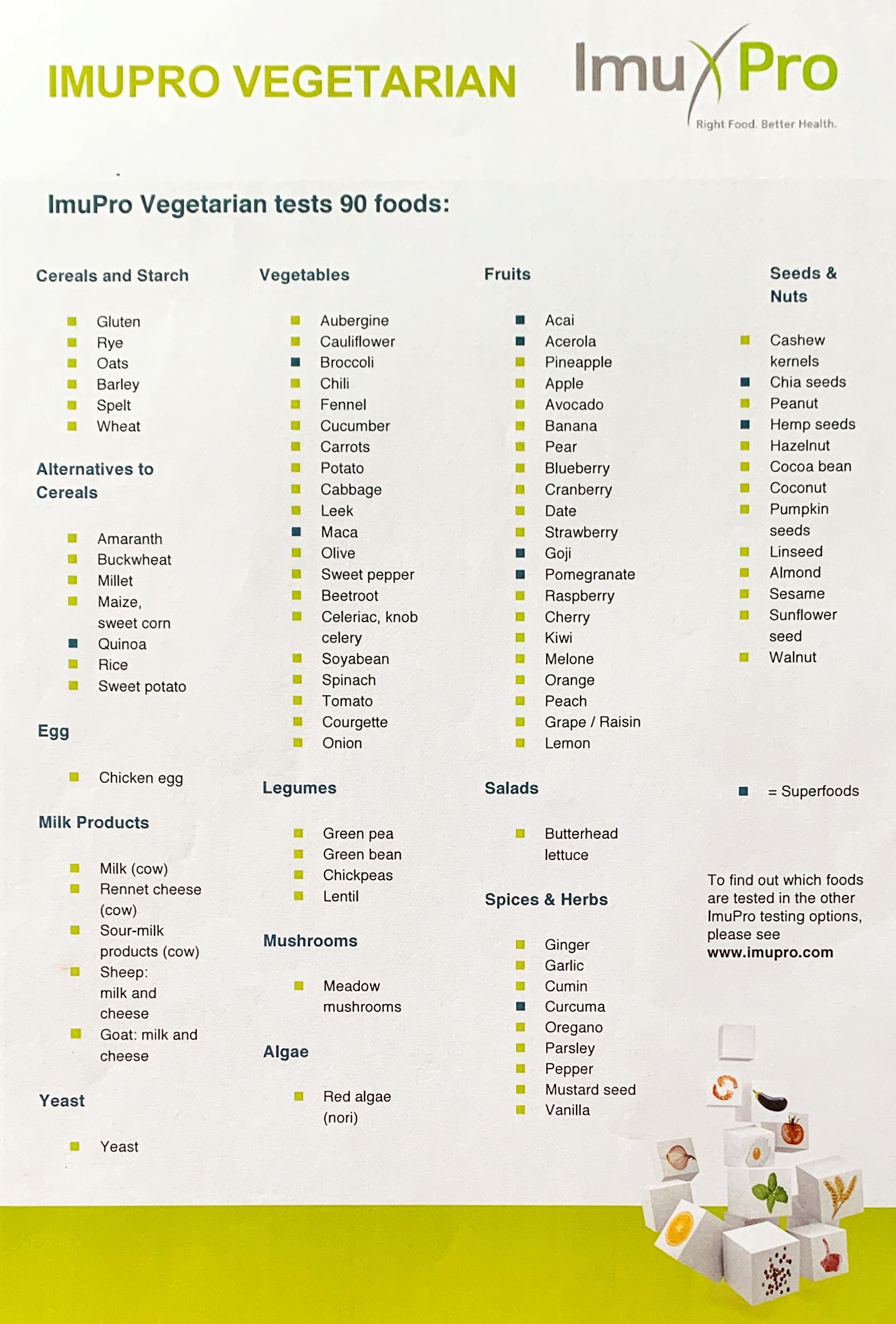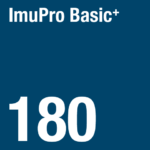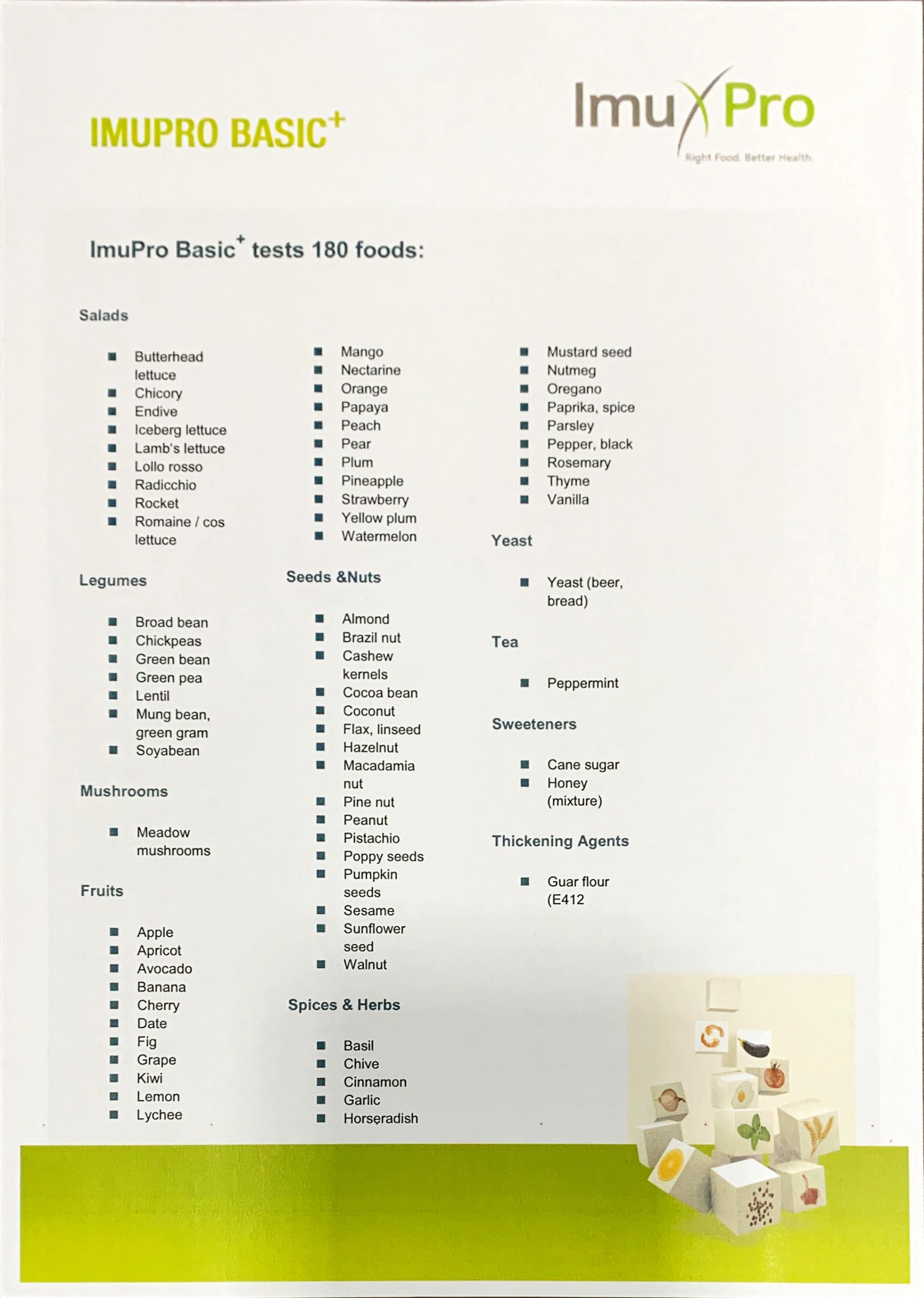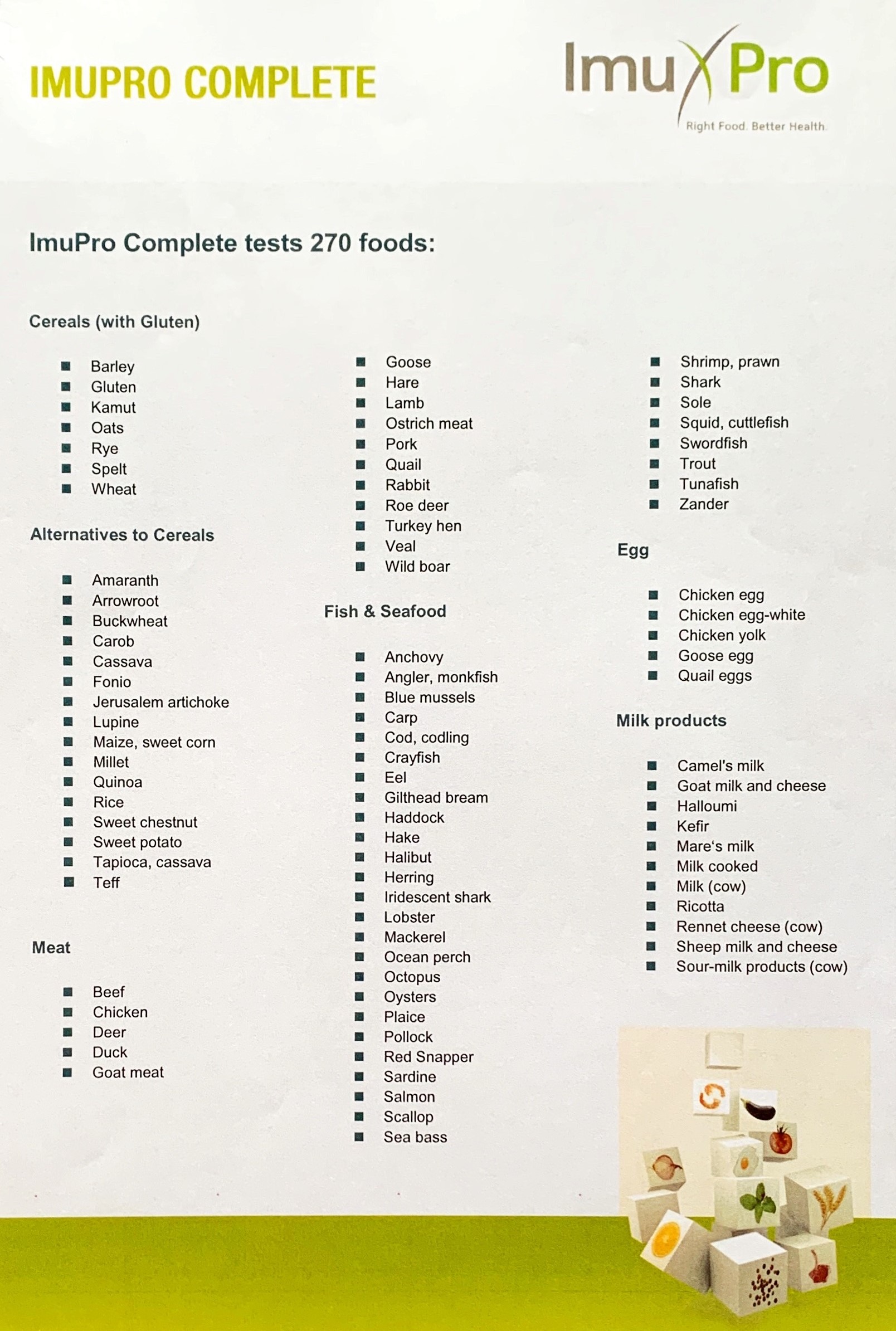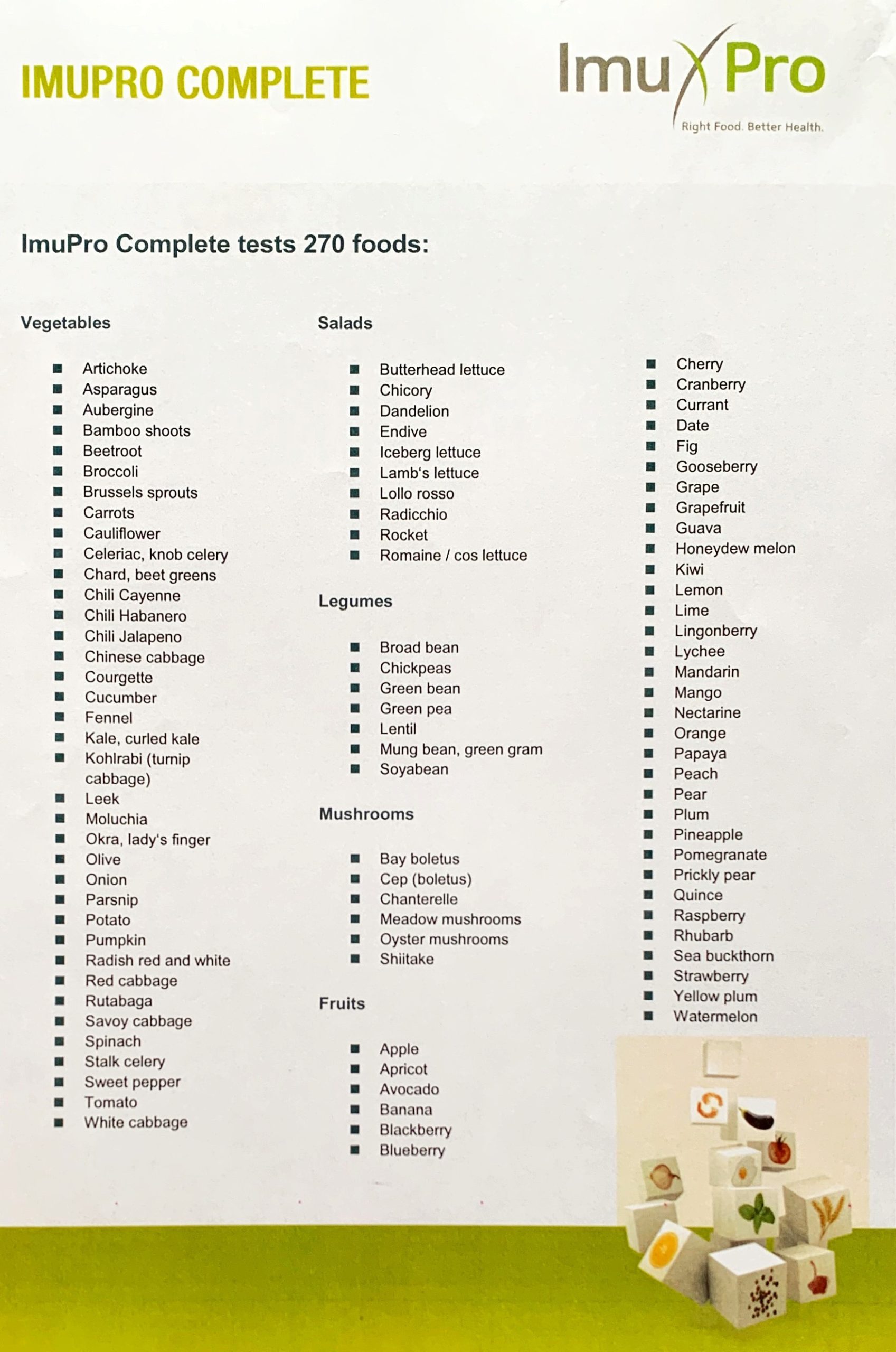
Other Services
Looking for other services?

Cardiac Screening

Audiometry Hearing Test

Eye & Ophthalmology Services

Food Allergy & Nutrition

Gastroenterology Services

Physiotherapy Services

Sleep Studies

Cardiac Screening
Cardiac Screening
“Prevention is better than Cure”.
At Bethesda Medical Centre our focus is on Primary Prevention. Early medical interventions improve your chance against common heart diseases. However if you do experience chest pain or shortness of breath, please consult your physician or get medical attention immediately.
High Cholesterol
Elevated cholesterol levels are known to contribute to plaque build-up or atherosclerosis. Our basic Lipid Screening involves measurement of Low Density Lipoprotein (bad cholesterol), High Density Lipoprotein (good cholesterol), Triglycerides, Total Cholesterol and TC/HDL ratio.
Diabetes/High Blood Glucose
Fasting glucose level, HBA1C measurement, and OGTT (Oral glucose tolerance test) are some of the tests we conduct for basic diabetes screening. Early detection and management can prevent progressing to Type 2 diabetes mellitus. Early management with diet, lifestyle measures +/- medication can retard or prevent progression to insulin dependency.
Hypertension
Blood pressure is the force on the blood vessels and heart by the blood flow. The two components commonly measured are: systolic pressure (the higher reading), which is the maximum pressure in the arteries when the heart is pumping; and diastolic pressure (the lower reading) which is the pressure when the heart is relaxing in between contractions. Hypertension is defined as a blood pressure consistently exceeding 140/90mmHg. Hypertension is commonly acknowledged as the ‘silent killer’ because it does not always produce symptoms. It is also one of the common condition that causes damages to different organs. High blood pressure if left uncontrolled can lead to potentially serious complications like heart attack, stroke, blindness and chronic kidney failure.
Stroke
Stroke is a major cause of death or disability in Singapore. Stroke occurs when blood supply to part of the brain is reduced or interrupted, causing the brain tissue to be deprived of oxygen and nutrients.
Obesity
Being overweight will increase your risk of cardiovascular diseases. Please discuss with your staff regarding measurement of your body mass index (BMI). Body mass index (BMI) is a measure of body fat based on height and weight.
High-Sensitivity C-Reactive Protein (hsCRP)
C-reactive protein is a protein substance present in the blood in response to injury or infection. High-sensitivity C-reactive protein (hs-CRP) is more sensitive compared to a standard test and can be used to evaluate the risk of developing coronary artery disease. High levels may be associated with increased risk for heart attacks and/or stroke.
Resting 12-lead Electrocardiography (ECG)
Resting ECG is a non-invasive test that is useful in detecting cardiac abnormalities such as arrhythmias, heart blockages (bundle branch blocks), coronary artery disease, left and right heart enlargement (hypertrophy). It is also useful in pre-exercise assessment.
Exercise Stress Test
Exercise Stress ECG (Treadmill Stress Test)
Exercise Stress Test looks at how well the heart works while under stress. When exercising, the body works harder and requires more oxygen to flow to the heart. The test can evaluate if the blood supply to the heart is adequate during stress. It also helps us discuss with you regarding the appropriate type and level of exercise programme. During the test, the patient will have leads placed on the chest/body that is attached to the ECG monitoring equipment. The patient starts by walking slowly on a treadmill. The speed and tilt of the treadmill will increase as the exercise test progresses, producing the effect of going up a slope at a progressively increased work-rate. The heart rate and blood pressure will be monitored during the test. The patient may stop anytime he feels tired, unwell or for any reason. An exercise stress test can be used to evaluate for the following;
- adequacy of blood flow to the heart and diagnose for coronary artery diseases,
- symptoms such as chest pain, palpitation or shortness of breath,
- suitability to start or continue with exercise program,
- risk of dangerous heart-related conditions such as a heart attacks or other cardiac diseases.
- assess effectiveness of cardiac procedures done.
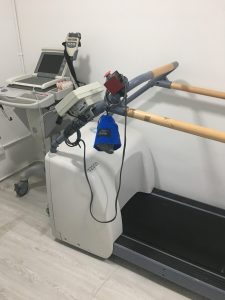
Before Procedure:
The patient is hooked up to ECG leads and blood pressure cuff.
During Procedure:
Start off at a slow walking pace, then speed and gradient of the treadmill will increase regularly at 3 minutes interval.
End of Procedure:
Monitor for at least 5 mins at recovery stage to monitor on ECG / blood pressure changes.
Purpose
- Detect ischaemic heart disease
- Investigate symptoms of chest pain, shortness of breath or light-headedness
- Assess the response of the heart to increased workload and demand for blood during exercise.
- Monitor how much the heart can handle before abnormal rhythm begins or blood flow to the heart muscle drops
- Identify abnormal heart rhythms
- Develop a safe exercise program
Who should go for TMX
- Positive family history of ischaemic heart diseases
- Unhealthy lifestyle
Preparation before procedure
- Ensure you are not on beta-blockers. Check with your doctor if you are required to stop your hypertension medication before the test.
- No caffeine for 12hrs before test
- Not pregnant
- Bring along a set of running attire and shoes
- For patients with chest hair, it is advisable to shave before exam.
- Do not apply lotion, oil or powder to the chest
- Bring your inhaler in case you require it to help in breathing
Risk of Procedure
- The test is generally safe with very low risk of complications
- Life-threatening heart rhythm (<0.2%)
- Acute myocardial infarction (0.1%)
- Death (0.1%)
- Fall
To stop procedure when
- Develop chest pain or shortness of breath
- Abnormally high or low blood pressure/ heart rhythm
- Dizziness /fatigue / unable to continue exercise
- Abnormal changes in your electrocardiogram

Audiometry Hearing Test
Audiometry hearing test is used to assess conditions of tinnitus, hearing loss, deafness & presbycusis. Hearing loss comes with age but can affect anyone. Studies showed at least 25 percent of people over 50 experience hearing loss, and 50 percent of people over 80 experience it. One way to test for hearing loss is to use audiometry.
Noise-induced deafness NID
NID is a condition where there is permanent loss in hearing sensitivity. This can cause communication difficulties, social isolation and adversely affect quality of life. In the workplace, NID can be caused by prolonged exposure to excessive noise generated by industrial processes and work activities, and is compensable under the Work Injury Compensation Act.
Hearing Tests
A hearing test or pure tone audiometry is to find out the softest levels of sound a person can hear at individual pitches of sounds (hearing thresholds). At Bethesda our hearing test is done in sound-proof booth and conducted by technicians trained and qualified in industrial audiometry.
- Pure Tone Air Conduction Audiometry
- Our pure tone audiometric testing assess hearing across the speech spectrum. You need to listen out for various beeps and sound, and press a button as you hear them. The softest sounds that you are able to hear will be marked on a graph called an audiogram.
- Pure Tone Bone Conduction Audiometry
- This test determines the area in the ear where the hearing problem lies. Hearing loss originating from the middle ear can often be medically treated. However, if the hearing loss is in the inner ear then there is greater likelihood that it is permanent hearing problem that may need hearing aids.
Services
- Sound Proof Audiometric Booth
- DFD / DWD screening for noise induced deafness for
- WorkplaceSafety & Health WSH requirement
- Qualified Audiometrist certified in Industrial Audiometry
- Visiting Audiologist with Hearing Aid & Cochlear Implant Services
- Hearing Conservation Programme
- Tinnitus & Hyperacusis Management
Cost
- Pure tone Audiometry (Air & Bone Conduction) – $60

Eye & Ophthalmology Services
Your eye problems may range from dry or itchy eyes, to more serious ones such as cataract and glaucoma. The first step to comprehensive and timely care starts with a detailed check.
General Eye Screening
The best way to ensure optimal eye health is to have your eyes checked regularly. An examination by an eye doctor (Ophthalmologist) is prudent because eye diseases do not always have symptoms. Prompt and early detection and timely treatment can prevent visual loss. Screening can also detect dry eyes, allergic eye conditions and complications associated with prolonged use of contact lenses.
Specialised Eye Assessment
- Near & distant vision testing
- Colour vision testing
- Tonometry
- Non-contact assessment using Air Puff Tonometry
- Purpose:
-
- To measures the intraocular pressure (IOP – pressure inside the eye), and determine risk of glaucoma.
- Glaucoma is a serious eye disease in which there is increased fluid pressure within the eye, and can damage the optic nerve causing loss of vision.
-
-
- Who should go for Tonometry? > 60years old
- Family history of glaucoma
- Have diabetes
- Have hypothyroidism
- Have other chronic eye conditions/ injuries
- Are near-sighted
- Used corticosteroid medications for prolonged periods of time
- Experiencing symptoms such as;
– gradual loss of peripheral vision
– tunnel vision
– severe eye pain
– blurred vision
– halos around lights
– reddening of your eyes
- Who should go for Tonometry? > 60years old
-
- During procedure
- Rest your chin on a device similar to a slit lamp.
- Stare straight into the examining device. When you are at the appropriate distance from the device, a tiny beam of light reflects off of your cornea onto a detector.
- A puff of air is then directed at the eye, which will slightly flatten the cornea; how much it flattens depends on the eye pressure.
- This causes the tiny beam of light to move to a different spot on the detector. The instrument calculates eye pressure by looking at how far the beam of light moved.
- Normal range of pressure range: 12 – 22mmHg
- During procedure
Common Eye Conditions:
Cataract 白内障
A cataract is a clouding of the lens – the structure in the eye responsible for focusing light rays entering the eye so that we can see.
Patients complain of blurring of vision, visual distortion and a general deterioration in the acuity (sharpness) of images seen. They may also complain of glare, need more light to read, have poorer night vision or see faded colours.
This form of visual loss, though common, is reversible. The cloudy lens is removed using the latest techniques via a small incision that does away with the need for stitching, and an artificial lens is inserted in place of the cataract. Recovery is swift with this method of surgery and success rates are high at almost 100
Glaucoma 青光眼
Glaucoma is the most common cause of blindness in Singapore. It results in 34% of all blindness in Singapore. Even though the disease affects 3% of those above 50 years old, many Singaporeans have not had their eyes screened for the disease.
If detected early, further loss of vision can be prevented with eye drops. Only a small proportion of patients would ever need laser treatment and an even smaller group would have to undergo surgery. This makes it very worthwhile to screen early for the disease.
Essentially, there are two main types of glaucoma viz. Open Angle and Close Angle Glaucoma.
The open-angle variety accounts for the bulk of glaucoma sufferers. Yet it is difficult to detect because the affected patient may only start to detect changes when it is too late. Peripheral vision is lost gradually and central vision remains till the end, resulting often in patients seeking consultation only when it is too late.
The closed-angle variety presents more acutely, with a rapid spike in the intra-ocular pressure, resulting in patients experiencing eye pain and a quick deterioration in vision. The closed angle type of glaucoma has been found to be especially common among the Chinese, with the elderly having a higher risk for the condition. Laser treatment has a role in prevented attacks of close-angle glaucoma
Pterygium 瘀肉攀睛
A pterygium is a fleshy growth on the eyeball that starts from the transparent membrane (conjunctiva) covering the white of the eye (sclera). It gradually encroaches on the clear central portion of our eye (the cornea), causing astigmatism and if advanced, significant scarring and direct obstruction of the visual axis.
Its formation is thought to be due to disordered growth secondary to excessive ultraviolet light exposure; as such, the trusty pair of sunglasses comes in handy again. Eye surgeons often encourage our patients by explaining that pilots are frequently spotted with sunglasses on not so much as to look like Tom Cruise, as to prevent the formation of this dreaded condition as they are high up in the stratosphere.
We do not need to lose sleep even if you notice this fleshy growth in your eyes. It is however prudent to have an Ophthalmologist (eye doctor) check it to make sure that it is not in danger of causing astigmatism, scarring or blocking the visual axis
Dry Eyes 干眼症
When the eyes are dry, patients may complain of strain, a dull ache, or even a stinging and burning sensation over the eye region. Occasionally, their eyes may water as in a reflex secretion of tears.
In our hot climate, the air conditioner is almost indispensable to some and with that, the air blowing in your face is most certainly drier and contributory to dry eyes.
The constant use of computers, handphones, Ipads and other hand held devices also contribute to eye strain. To explain this simply, think of our eyelids as a windscreen wiper and our eyes as the windscreen. Whenever we blink, a layer of tears is even spread over the cornea; but if we do not replenish this, it would evaporate. Research has shown that we blink an average of 15 times a minute, and that a minimum of 10 blinks a minute is needed to ensure a healthy tear film, assuming that the eyes produce enough tears in the first place. If however, we are staring incessantly at our hand held devices, we only average a blink rate of between 7-8 blinks a minute.
The solution is to take frequent breaks if time permits. Otherwise, keep that lubricant in hand. The author suggests an eye drop that is preservative free, which then can be used as and when necessary
Allergic Eye Disease 过敏性眼病
Patients will complain of itchy and/or watery eyes, and perhaps a foreign body sensation due to the presence of ‘cobblestone like protrusions/papillae’ on an otherwise smooth eyelid surface (see picture). Patient with a history of asthma, eczema, sinusitis, or rhinitis may concurrently be afflicted by this condition. It is also found in soft contact lens users, when it is subtyped as giant papillary conjunctivitis.
When left untreated, patients will rub their eyes incessantly, often leading to secondary discolouration under their eyes that makes them almost ‘racoon like’, they will always look tired even though they feel otherwise. The eyelid skin above and below the eyes are only one third as thick as the skin elsewhere on the face; as such, chronic rubbing will cause the skin to quickly assume a crepe-like appearance.
Treatment of the condition, besides avoidance of the allergens that irritate the eyes, is with eye drops
Age-Related Macular Degeneration (AMD) 年龄相关性黄斑变性
This is the third most common cause of blindness in Singapore and affects the elderly. Although patients may experience distortion or darkening in their central vision, the condition is sometimes picked up in asymptomatic patients
Lumps and Bumps of the Eyelids – Infection of the Eyelids, Stye, Chalazion
These are conditions which are very common and when not properly managed, become a nuisance either because they are painful, or because they are unsightly on the eyelids.
A stye is an infection of the oil gland of the eyelid involving either the meibomian gland (the oil gland situated on the inner aspect of the eyelid margin) or the Gland of Zeis, the oil gland found at the base of an eyelash, and are therefore in a more outlying/superficial location on the eyelid.
A chalazion is a blockage of the oil gland and is strictly speaking, not painful. It may however become secondarily infected.
Much confusion exist as regards these terms, even amongst doctors, but all agree that if properly managed, one can avoid a nasty looking or painful problem.
Tips on the condition
Good eyelid hygiene will reduce the incidence of these occurrences. Sometimes, a small lesion will spontaneously resolve itself because the secretions/pus has found its way out of the natural gland opening. This forms the basis of conventional advice to apply intermittent compression of these lesions.
However, one must be careful to not compress for too long or too hard, in order that blood circulation to the eye do not get compromised.
Occasionally, in spite of one’s best efforts, these crop up, and it is wise to seek immediate consultation with an Eye specialist or Ophthalmologist.
At our practices, we have a special interest in the management of eyelid issues. I have found that if detected early enough, I am able to express the meibomian secretions or pus on the slit lamp (a piece of equipment that is present in an Eye Clinic), without resorting to painful incision and drainage procedures.
Specialist Ophthalmologist
The Eye & Aesthetics Clinic is a Specialist practice that will look after all your eye care needs. From General eye care (eg. Cataract, Myopia and LASIK Refractive Surgery, Glaucoma, Diabetic Retinal Conditions, Eye Allergies, Dry Eyes etc.), to Oculoplastics (what Dr Chuah subspecialises in eg. Droopy Eyelids, In-turned lashes, Cosmetic Double Eyelid and Eye bags Surgery), we aim to provide patient centric care at reasonable and affordable rates.

Food Allergy & Nutrition
Food Allergy is a condition that causes your immune system to treat normally harmless food as though it was a dangerous protein, virus, bacteria, or other infectious agent. The immune system response to a food allergy ranges from mild rashes to abdominal bloatedness and pain to life-threatening conditions including anaphylactic shock.
Food allergies are common in both children and adults. Some children may outgrow their allergies as they get older.
Overweight, stomach and bowel problems, migraine, concentration problems may be associated with delayed food allergies.
Are you familiar with these complaints?
Continual stomach and bowel problems (flatulence, constipation, irritable bowel), or headaches and prolonged skin problems (itchiness, neurodermatitis, psoriasis), chronic tiredness and obesity?
These chronic symptoms may be associated with inflammatory responses due to food products in certain individuals.
Please discuss with us regarding food allergy testing and change of diet programmes.

Gastroenterology Services
Our specialist gastroenterology clinic provides comprehensive one-stop medical services for your gastric conditions, digestive diseases, liver & Hepatitis problems, providing you with efficient, safe, balanced and effective treatment for your illnesses.
Medical Conditions
Common gastroenterology conditions.
- Upper abdominal pain
- Bleeding per rectum
- Non-specific abdominal pain
- Liver inflammation as evident from a derange blood tests
- Follow up for hepatitis B and C.
Liver Diseases
- Fatty liver
- Hepatitis B
- Hepatitis C
- Liver cancer
- Alcoholic liver disease
- Drug-induced liver injuries
- Liver cirrhosis
- Other forms of acute and chronic liver diseases
Gastrointestinal Diseases
- Dyspepsia
- Inflammatory bowel disease (IBD)
- Irritable bowel syndrome (IBS)
- Chronic constipation
- Non-specific abdominal pain
- Gastroesophageal reflux disease
- Colorectal cancer screening
- Gallstones
- Pancreatitis
- Other gastrointestinal cancers and conditions
Preventive Screening
- Liver cancer
- Bile duct cancer
- Pancreatic cancer
- Colorectal cancer
- Viral hepatitis A, B and C
- General medical/health checks
Vaccinations
- Hepatitis A
- Hepatitis B
- Combined Hepatitis A & B
- Post-transplant vaccinations
Liver Transplantation
- Pre-transplant assessment of donor
- Pre-transplant assessment of recipient
- Post-liver transplant follow-up
- Liver dialysis
Procedures
- Gastroscopy
- Colonoscopy
- Interventional radiological procedures
- Radio-frequency ablation (RFA)
- Transarterial chemoembolisation (TACE)
- Biliary and vascular stenting
- Banding of oesophageal varices
- Endoscopic retrograde cholangiopancreatogram (ERCP)
- FibroScan® (a non-invasive screening for liver fibrosis)
Surgery (Open and Laparoscopic/”Key Hole”)
- Liver
- Pancreas
- Gallbladder
- Bile duct
Oncology surgery
- Esophagus and stomach cancer
- Colorectal cancer
- Small intestine cancer
- Hepatopancreatic biliary cancer surgery
- Liver cancer
- Pancreatic cancer and cysts
General surgery
- Hernia operations
- Piles
- Circumcision
- Laparoscopic cholecystectomy
- “lumps and bumps” removal
- Thyroid surgery
- Varicose veins surgery
- Liver abscess
- Biliary stones
Helicobacter Pylori Infection
Helicobacter pylori (H. pylori) infection occurs when a type of bacteria called Helicobacter pylori (H. pylori) infects your stomach. This usually happens during childhood. A common cause of peptic ulcers, H. pylori infection may be present in more than half the people in the world.
Most people don’t realize they have H. pylori infection, because they never get sick from it. If you develop signs and symptoms of a peptic ulcer, your doctor will probably test you for H. pylori infection. If you have H. pylori infection, it can be treated with antibiotics.

Physiotherapy Services
Symptoms
Most people with H. pylori infection will never have any signs or symptoms. It’s not clear why this is, but some people may be born with more resistance to the harmful effects of H. pylori.
When signs or symptoms do occur with H. pylori infection, they may include:
- An ache or burning pain in your abdomen
- Abdominal pain that’s worse when your stomach is empty
- Nausea
- Loss of appetite
- Frequent burping
- Bloating
- Unintentional weight loss
Make an appointment with your doctor if you notice any persistent signs and symptoms that worry you. Seek immediate medical help if you experience:
- Severe or persistent abdominal pain
- Difficulty swallowing
- Bloody or black tarry stools
- Bloody or black vomit or vomit that looks like coffee grounds
Diagnosis
Tests and procedures that we can do to determine whether you have an H. pylori infection:
- Blood test. Helicobacter Pylori IgG – Analysis of a blood sample may reveal evidence of an active or previous H. pylori infection in your body. However, breath and stool tests are better at detecting active H. pylori infections than is a blood test.
- Urea Breath Test. During a breath test, you swallow a liquid that contains tagged carbon molecules. If you have an H. pylori infection, carbon is released when the solution is broken down in your stomach.Your body absorbs the carbon and expels it when you exhale. You exhale into a bag, and we will the do testing to detect the carbon molecules. Acid-suppressing drugs known as proton pump inhibitors (PPIs), bismuth subsalicylate (Pepto-Bismol) and antibiotics can interfere with the accuracy of this test. You should stop taking those medications for a week or two weeks before you have the test. This test is available for both adults and children.
- Gastroscopy. This can be done as a day-surgery procedure. During the exam, the specialist threads a long flexible tube equipped with a tiny camera (endoscope) down your throat and esophagus and into your stomach and duodenum. The specialist will look for irregularities in your upper digestive tract and may remove tissue samples (biopsy) to analyze for H. pylori infection. This test is more invasive than a urea breath test, it may be used to diagnose for H. pylori ulcers and also evaluate for other digestive conditions.
Physiotherapy may be indicated if you have symptoms of pain, discomfort or physical limitation that is restricting you from doing what you wish to and have to do, including difficulties with performing your job, household chores and/or social/recreational activities.
Our physiotherapist emphasise on the importance for clients to understand their condition and acquire the necessary skills and knowledge to manage their own issues. We strive to ensure clients have adequate guidance and competency level in self management.
Our sessions are based on evidence-based therapy practices, with detailed assessment done to understand client’s needs and problem before tailoring appropriate treatment programmes.
Pain Management
- Back & neck pain
- Cervicogenic/tension headaches
- Temporomandibular joint (TMJ) pain
- Frozen shoulder
Degenerative Conditions
- Lumbar/cervical spondylosis
- Arthritic conditions e.g. OA hip, OA knee
Ergonomics and Postural Correction
- Scoliosis management
- Back & neck care programs
- Ergonomic assessment & advice
- Sports Injuries
- Ankle sprains & chronic ankle instability
- Rotator cuff lesions
- Ligament /meniscus lesions
Pre/Post Op Management
- ACL reconstruction and meniscectomies
- Rotator cuff repairs
- Joint replacement – knee replacement, hip replacement
Others
- Neurogeriatric rehabilitation
- Falls prevention program
- Pregnancy-related back pain
Future
- Urinary Incontinence for ladies
Massage Techniques
- Physiotherapy may be indicated if you have symptoms of pain, discomfort or physical limitation that is restricting you from doing what you wish to and have to do, including difficulties with performing your job, household chores and/or social/recreational activities.
- Our physiotherapist emphasise on the importance for clients to understand their condition and acquire the necessary skills and knowledge to manage their own issues. We strive to ensure clients have adequate guidance and competency level in self management.
- Our sessions are based on evidence-based therapy practices, with detailed assessment done to understand client’s needs and problem before tailoring appropriate treatment programmes.
- Effleurage for swelling
- Deep tissue massage for tight soft tissue eg Sport massage
- Acupressure/ trigger point release
Joint Mobilisation And Manipulation
Electrical And Physical Modalities
- Ultrasound therapy for micro massage, to decrease pain and swelling
- Phonophoresis
- Interferential therapy for pain, swelling
- Ice-ing for pain and swelling
- Heat for stiffness of joints and muscles
- Taping to support, inhibit, or facilitate
Education
- Stretches
- Strengthening exercises
- Ergonomic advice
Massage Techniques
- Physiotherapy may be indicated if you have symptoms of pain, discomfort or physical limitation that is restricting you from doing what you wish to and have to do, including difficulties with performing your job, household chores and/or social/recreational activities.
- Our physiotherapist emphasise on the importance for clients to understand their condition and acquire the necessary skills and knowledge to manage their own issues. We strive to ensure clients have adequate guidance and competency level in self management.
- Our sessions are based on evidence-based therapy practices, with detailed assessment done to understand client’s needs and problem before tailoring appropriate treatment programmes.
- Effleurage for swelling
- Deep tissue massage for tight soft tissue eg Sport massage
- Acupressure/ trigger point release
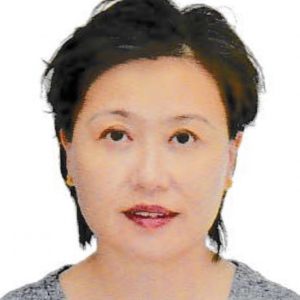
Our Physiotherapist
Lim Kit Looi
Bachelor of Science (Physiotherapy)
Kit graduated from South Australian University (Previously known as South Australia Institute of Technology). She has 30 years of clinical and managerial experience under her belt. She started in Mount Elizabeth in 1988, working with acute inpatient cases from an array of disciplines such as Intensive Care Unit, cardiovascular and orthopedic.
She was one of the pioneers in establishing the Neuro Rehab Unit in Mount Elizabeth, which pride itself to be a multi-disciplinary approach rehabilitation. She was seconded to head the Gleneagles Hospital Rehabilitation Department. After 12 years with Parkway Group of Hospitals, she left to establish her own private practice, PhysioKit, of 16 years.
After taking 2 years of sabbatical leave, she now joined Physio@Novena Pte Ltd. Conditions that she sees are orthopedic e.g. post trauma, back, neck, upper and lower limbs. Neurological conditions e.g. strokes and Parkinson Disease. She also has special interest in Women’s health relieving ante and post-natal mothers from their concerns with urinary incontinence, bodily pain and getting fit again. Last but not least, she does therapy for patients who have mobility difficulty due to injury or frailty in the comfort of their own homes.


Sleep Studies
What is Sleep Apnoea?
Sleep Apnoea can be thought of as an extreme form of snoring. But unlike snoring, which is mostly a relationship or quality of life issue, Sleep Apnoea is a disease with significant health implications. Snoring and Sleep Apnoea both result from vibration of soft tissue in the throat. When we fall asleep, our muscles relax, and as we breathe through the relaxed tissues in the throat, they tend to vibrate. If they vibrate a little, we snore a little. If they vibrate a lot, we snore a lot. Sleep apnoea is when they vibrate enough so that the tissue actually blocks the airway.
Why is Sleep Apnoea dangerous?
Sleep Apnoea is dangerous because it prevents you from getting normal, restorative sleep. Every time your airway is blocked, your brain awakens you (very briefly) to re-open the airway. This disrupts normal sleep patterns and cycles. In addition, the stop breathing episodes can cause dangerous decreases in blood oxygen levels, robbing your brain and vital organs of the oxygen they require. Sleep apnoea increases your risk of high blood pressure, heart attack, obesity, erectile dysfunction and even depression and anxiety. As such, Sleep apnoea must be treated.
Stop Bang Questionnaire
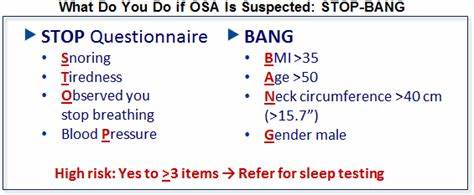
Home Sleep Study
A home sleep study is a convenient and affordable test. These are our home sleep study services with our sleep technologist setting up the equipment for safety and convenience. Please visit us at our clinic and speak to our doctors regarding your health concerns.
- Type 2: Comprehensive, Unattended Home Sleep Study with sleep architecture, ECG, etc.: S$588
- Type 3: Partial, Unattended Home Sleep Study: S$428
- CPAP Resmed (The Airsense 10, regular): S$1,988
- The Airmini (Travel size): S$1,888

